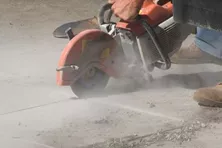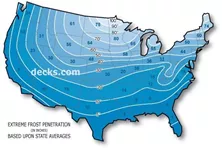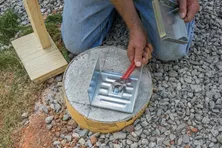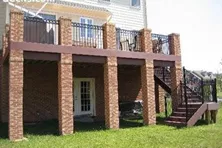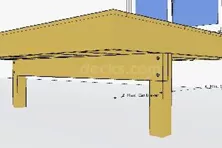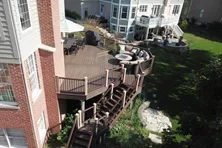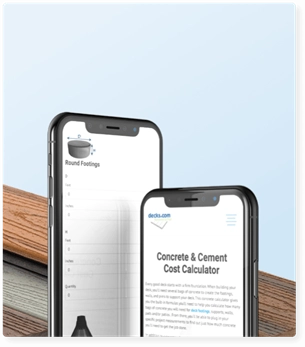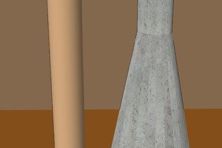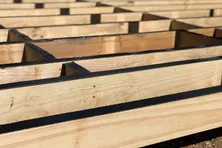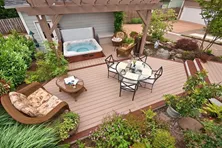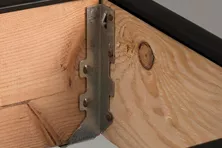Using Rebar for Concrete Deck Footings
Plain concrete deck foundations without rebar are acceptable under the minimum standards of construction established in the International Residential Code. However, placing reinforcing steel within footings is a relatively easy and inexpensive practice that can provide increased performance. Footings with large bearing areas or unstable soil can benefit from adding rebar to prevent cracking.
When rebar is placed within a footing, it should be completely encased in concrete by a minimum of 3 inches on all sides. When rebar is allowed to project out of the footings, it is susceptible to more rapid corrosion. Over time, rebar allowed to corrode into the footing can weaken the footing, creating areas subject to cracking.
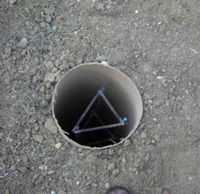
Cutting a Concrete Pad
Learn how to use a concrete saw to cut a hole in a patio slab to install a deck footing.
Deck Footing Depth
Find out how deep you need to dig your footings in your area. Look at our U.S. map of extreme frost penetration.
How many footings do I need?
Avoid a wobbly deck! Learn how to calculate the right number of footings to keep your structure safe and solid.
How to Decorate Deck Support Columns
Browse some examples of decorative deck support posts for tall decks.
How to Install Deck Girder, Cantilever or Drop Beams
Learn about the pros and cons of installing a cantilever, girder or drop beam to support your deck joists. This method allows for a notched post-to-beam connection.
Deck Joist Cantilever & Overhang Rules
Learn what factors determine the maximum joist cantilever overhang that is allowed.
More Helpful Resources
Explore Articles by Topic
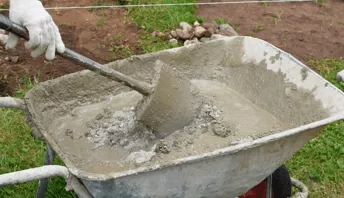
Footings
Information related to installing frost footings for decks
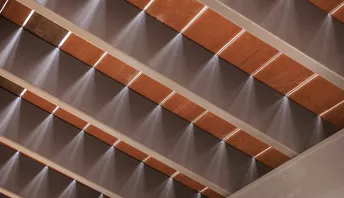
Framing
Learn structural framing methods
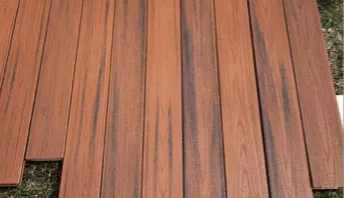
Decking
Learn about wood and composite decking materials
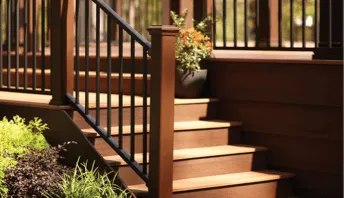
Stairs
An in-depth look at the complex issue of how to build stairs
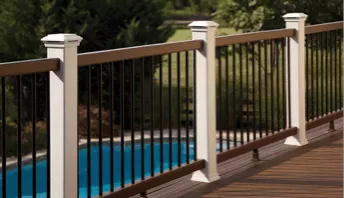
Railings
How to install guardrails and handrails to meet IRC code

Features
An overview on water drainage, benches, planters and lights
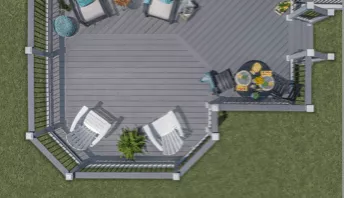
Design
The basics of deck design
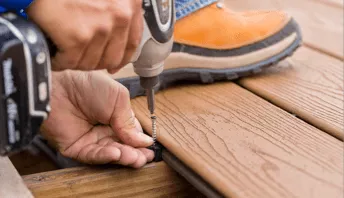
Planning
Learn about permits and working with contractors
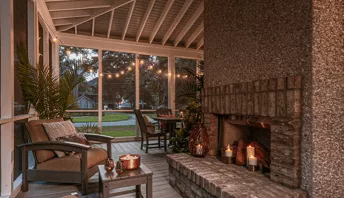
Porches & Patios
Build a covered deck to enjoy all seasons
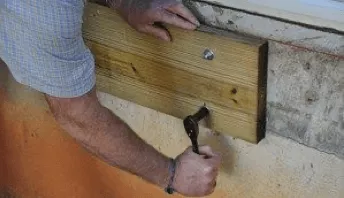
Ledger
Proper attachment techniques
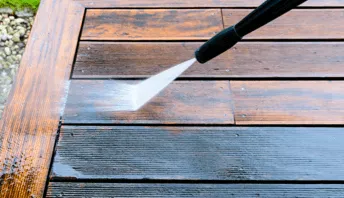
Care
Maintain your deck to maintain your investment
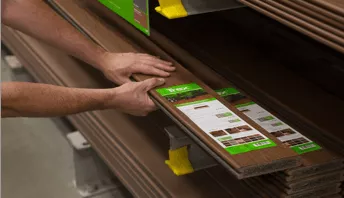
Materials
An overview on water drainage, benches, planters and lights
How many footings do I need?
Avoid a wobbly deck! Learn how to calculate the right number of footings to keep your structure safe and solid.
Cutting a Concrete Pad
Learn how to use a concrete saw to cut a hole in a patio slab to install a deck footing.
Monolithic Pier
Compare the pros and cons of installing a solid concrete deck footing using a cardboard tube or engineered forms.
Why is Joist Protection so Important for Your Deck?
If you’ve ever seen a piece of wood left out in the weather for any period of time, you know what happens: decay. Whether through wet rot, insect damage, or mildew, the fibers begin to break down.
How to Build a Ground Level Deck
Adding a ground level or floating deck to your home may be the perfect addition to your outdoor space. Learn how to build a ground level deck at Decks.com.
Deck Joist Water Protection
Learn about a technique used by many pro builders for wrapping deck framing lumber with a waterproof barrier to prevent corrosion and rot.
Explore Articles by Topic

Footings
Information related to installing frost footings for decks

Framing
Learn structural framing methods

Decking
Learn about wood and composite decking materials

Stairs
An in-depth look at the complex issue of how to build stairs

Railings
How to install guardrails and handrails to meet IRC code

Features
An overview on water drainage, benches, planters and lights

Design
The basics of deck design

Planning
Learn about permits and working with contractors

Porches & Patios
Build a covered deck to enjoy all seasons

Ledger
Proper attachment techniques

Care
Maintain your deck to maintain your investment

Materials
An overview on water drainage, benches, planters and lights




